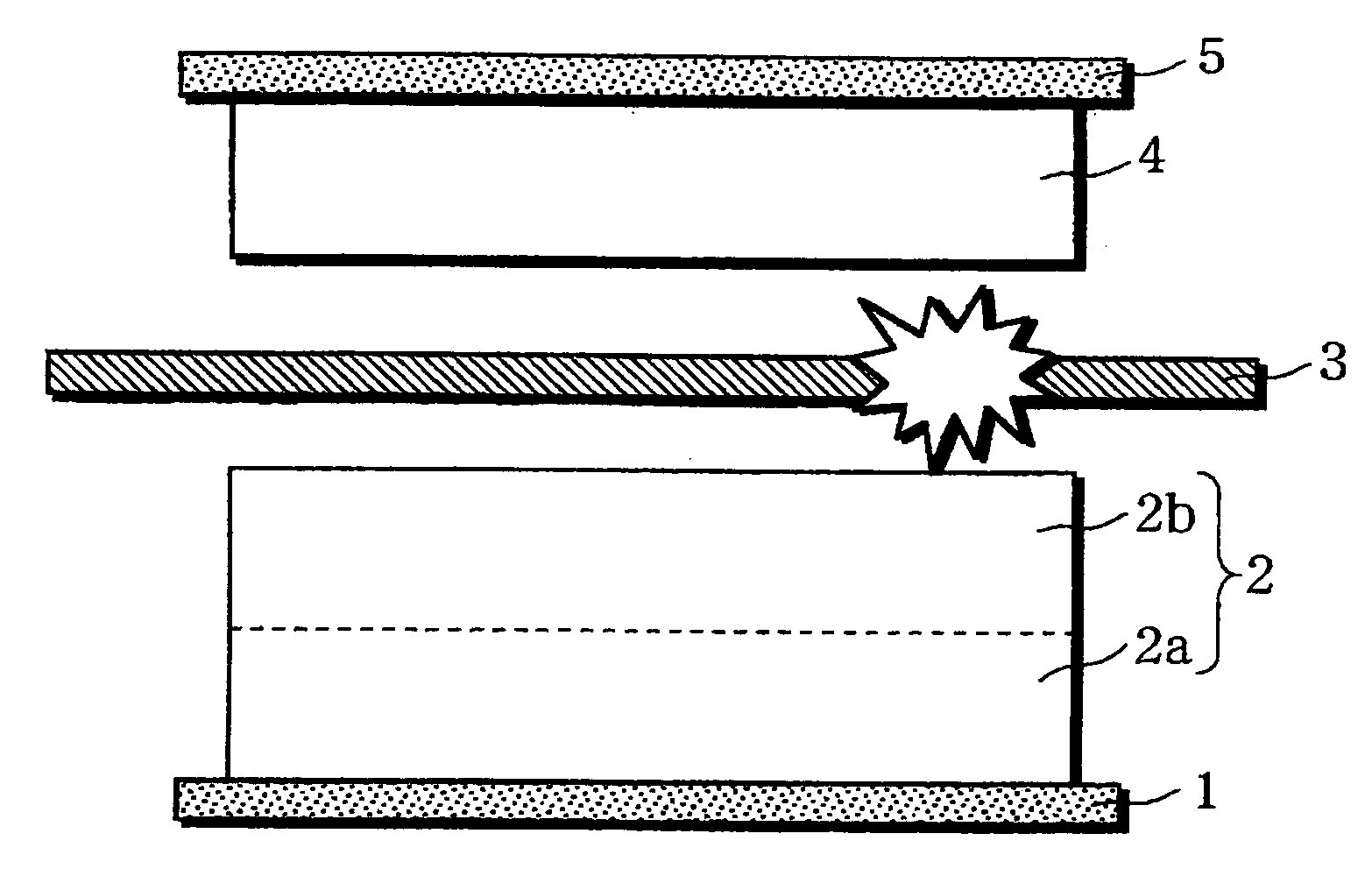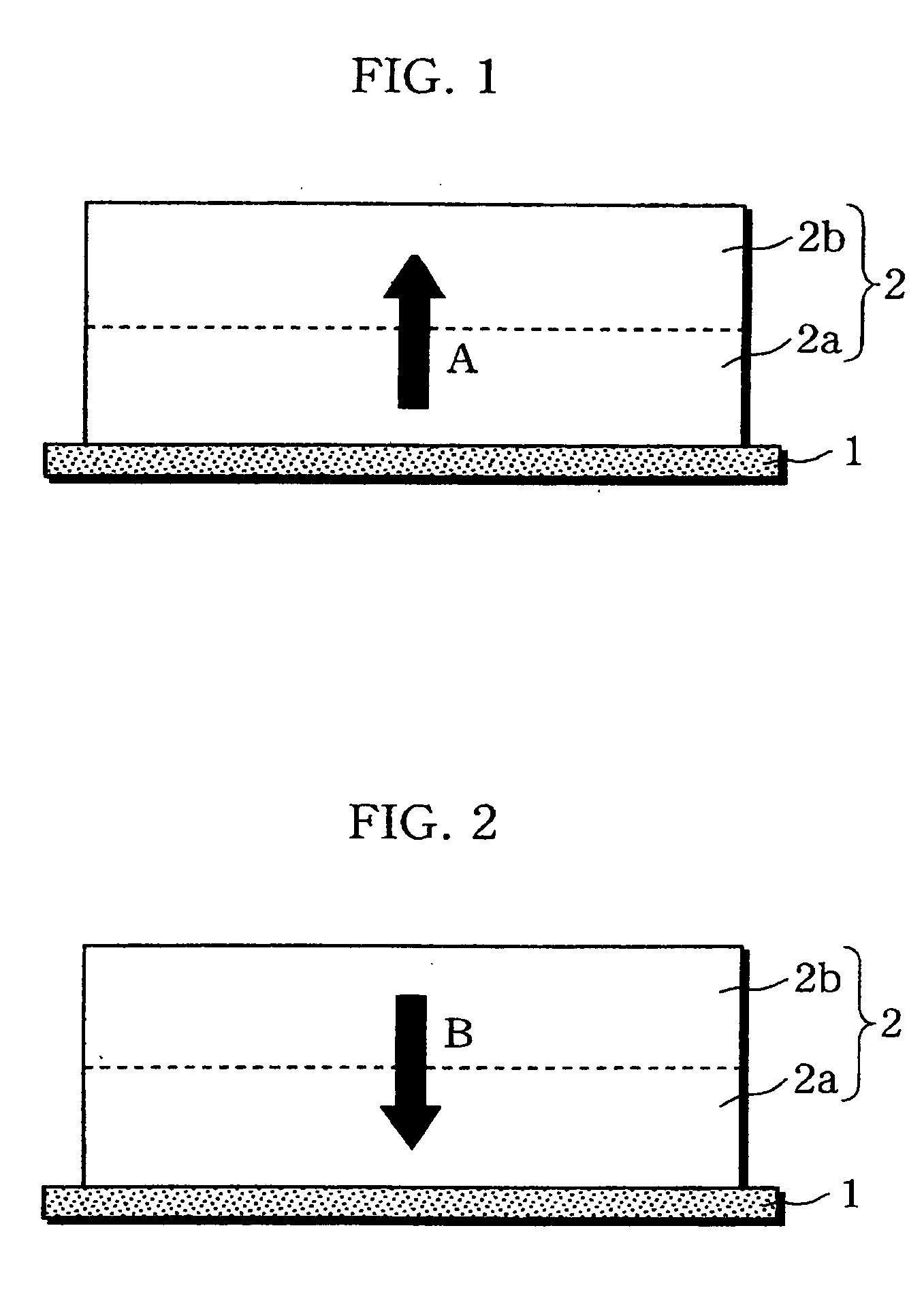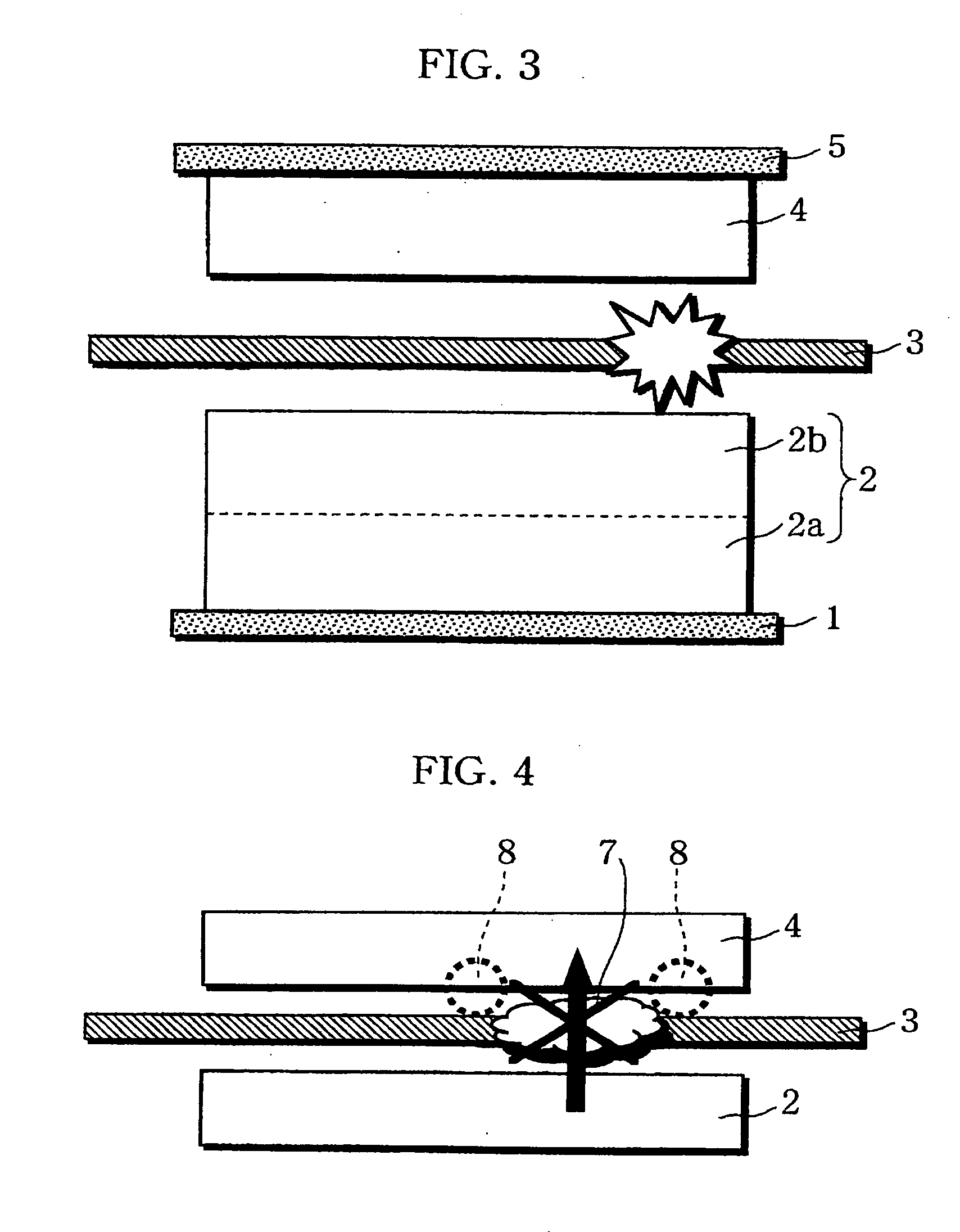Non-aqueous electrolyte battery
a non-aqueous electrolyte, battery technology, applied in secondary cell servicing/maintenance, cell components, sustainable manufacturing/processing, etc., can solve the problems of electrolyte solution's infiltrating performance into the interior of the electrode, battery safety to degrade, and battery capacity improvement has made little progress in recent months, etc., to achieve the highest resistance rate, low current collection performance, and high reactivity
- Summary
- Abstract
- Description
- Claims
- Application Information
AI Technical Summary
Benefits of technology
Problems solved by technology
Method used
Image
Examples
embodiments
Preliminary Experiment
[0079] Shutdown temperature (hereinafter also referred to as “SD temperature”) and meltdown temperature (hereinafter also referred to as “MD temperature”) were investigated with the foregoing electron beam cross-linked separator (used in later-described Batteries A1, A4, B1, C1, and D1 of the invention, as well as Comparative Batteries U1, V1, W1, and X1), a heat-proof layer-stacked separator (used in later-described Batteries A2, A5, and D2 of the invention as well as Comparative Batteries U3, V2, W2, X3, Y, and Z), and an ordinary separator (used in later-described Batteries A3, A6, B2, C2, D3, D4, E, and F of the invention as well as Comparative Batteries U3, V2, W2, X3, Y, and Z). The results are shown in Table 1. The method of fabricating test cells, the evaluation equipment, and the method of measuring SD temperature and MD temperature were as follows.
Fabrication Method of Test Cell
[0080] As illustrated in FIG. 5, a substantially square-shaped aluminu...
first embodiment
Example A1
[0088] A battery fabricated in the same manner as described in the foregoing working example was used as Example A1.
[0089] The battery thus fabricated is hereinafter referred to as Battery A1 of the invention.
Example A2
[0090] A battery was fabricated in the same manner as in Example A1 above, except that a heat-proof layer-stacked separator was used in place of the electron beam cross-linked separator.
[0091] The battery thus fabricated is hereinafter referred to as Battery A2 of the invention.
[0092] Herein, the heat-proof layer-stacked separator was fabricated in the following manner.
[0093] First, polyamide (PA), which is a water-insoluble, heat-resistant material, was dissolved in N-methyl-2-pyrrolidone (NMP) solution, which is a water-soluble solvent, and the resultant solution underwent low-temperature condensation polymerization to prepare a polyamide-doped solution. Next, this doped solution was coated on one side of a polyethylene (PE) microporous film that is...
second embodiment
Examples B1 and B2
[0120] Batteries were fabricated in the same manners as in Example A1 and Example A3 of the First Embodiment, except that the mass ratio of LCO and LMO in the positive electrode active material was 85:15.
[0121] The batteries thus fabricated are hereinafter referred to as Batteries B1 and B2 of the invention, respectively.
Comparative Examples V1 and V2
[0122] Batteries were fabricated in the same manners as in Comparative Example U1 and Comparative Example U3 of the First Embodiment, except that the mass ratio of LCO and LMO in the positive electrode active material was 85:15.
[0123] The batteries thus fabricated are hereinafter referred to as Comparative Batteries V1 and V2, respectively.
Experiment
[0124] Batteries B1 and B2 of the invention as well as Comparative Batteries V1 and V2 were studied for the tolerance to overcharging. The results are shown in Table 3. The conditions in the experiment were the same as those in the experiment of the foregoing First ...
PUM
 Login to View More
Login to View More Abstract
Description
Claims
Application Information
 Login to View More
Login to View More - R&D
- Intellectual Property
- Life Sciences
- Materials
- Tech Scout
- Unparalleled Data Quality
- Higher Quality Content
- 60% Fewer Hallucinations
Browse by: Latest US Patents, China's latest patents, Technical Efficacy Thesaurus, Application Domain, Technology Topic, Popular Technical Reports.
© 2025 PatSnap. All rights reserved.Legal|Privacy policy|Modern Slavery Act Transparency Statement|Sitemap|About US| Contact US: help@patsnap.com



